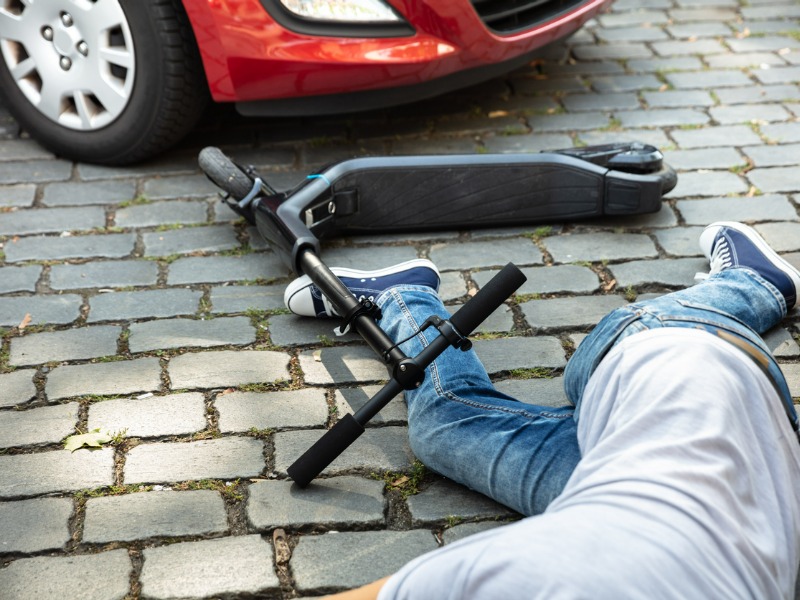What types of injuries happen when e-scooters collide with cars?

As you might expect, roadways and especially intersections are the most common places for accidents involving e-scooters that lead to claims and lawsuits.
“It’s difficult when a motor vehicle [is] following the rules of the road and, all of a sudden, they come into contact with e-scooter operators who might not be familiar with the rules of the road or think that they don’t apply to e-scooters,” said Jeff Weidman, a partner at law firm Clyde & Co. in Calgary.
“That’s when we see mishaps and collisions happen. [It’s worse] in higher-density areas with pedestrians and in intersections. And when that happens, it seems [in many] cases it’s the e-scooter that’s not only the instigator but [also the one] getting hurt. Or it’s a pedestrian who’s in the wrong place at the wrong time.”
And, if it’s not the e-scooter operator getting injured, it’s someone who is riding with them. Weidman pointed out e-scooter drivers often carry passengers, even though the vehicles are intended to carry only one person at a time.
“Much of [the problem] has to do with user behavior [and] user error,” he said. “[Contributing factors include] not using a helmet, not following the rules of the road, riding at high speeds, distracted operation while on their phones, not operating them where they’re supposed to be used [or] underage and inexperienced drivers.”
When scooters collide with cars, the autos primarily suffer paint scrapes, dents or other typical property damage – provided no other larger vehicles become involved.
“There are times, though, where motor vehicles have had to take evasive action to avoid e-scooter operators, which might mean sudden turning or sudden stopping incidents that could cause potential injury to the occupants of a motor vehicle.”
These can include sprains, strains and other soft-tissue injuries that happen with sudden acceleration or deceleration if a driver must act quickly to avoid a collision.
Injuries to e-scooterists
By contrast, injuries to e-scooter drivers are often far more serious and include fractures to legs, arms and wrists, dislocations, concussions, contusions and lacerations.
“Significant injuries we see are to internal organs, the liver, the kidneys, depending on how fast the operator was travelling at the time of impact and where the operator may have landed or what the operator strikes or comes into contact with as a result of the collision,” Weidman said.
“Not wearing a helmet is a significant cause of the head injuries and dental injuries and facial injuries that we are seeing occur.”
In terms of recovery, people in accidents involving e-scooters look to sue the manufacturer or the owner of the e-scooter, including municipalities that buy fleets of e-scooters for rental. But recovery is challenging because of broad waivers, which favour the manufacturers, that operators agree to when they purchase e-scooters.
“In the cases that I’ve seen, as you are beginning the process to purchase the e-scooter, there is usually a broad waiver in place that seeks to absolve the owner [such as a rental company] of liability arising from any injuries to the operator or to third parties arising out of the use of that the e-scooter,” Weidman said.
Coming case law
So far, there is little to no case law in Canada with respect to e-scooters specifically. “I expect at some point it will [happen] because in the normal course, and certainly in Canada, waivers aren’t always enforceable,” he added.
The key question in such a suit will be whether the waiver was brought to the user’s attention. And, if it was, did the user understand it and could they be reasonably expected to have reviewed and understood the waiver before taking on the risk?
“That’s going to…make its way through our courts at some point,” Weidman said. “[These devices] haven’t been around that long – and an injured party has two years in most Canadian jurisdictions to commence an action.
“So, more actions are likely going to be on the horizon. I’ve certainly seen that in recent case law and overall trends.”
Feature image by iStock.com/AndreyPopov







